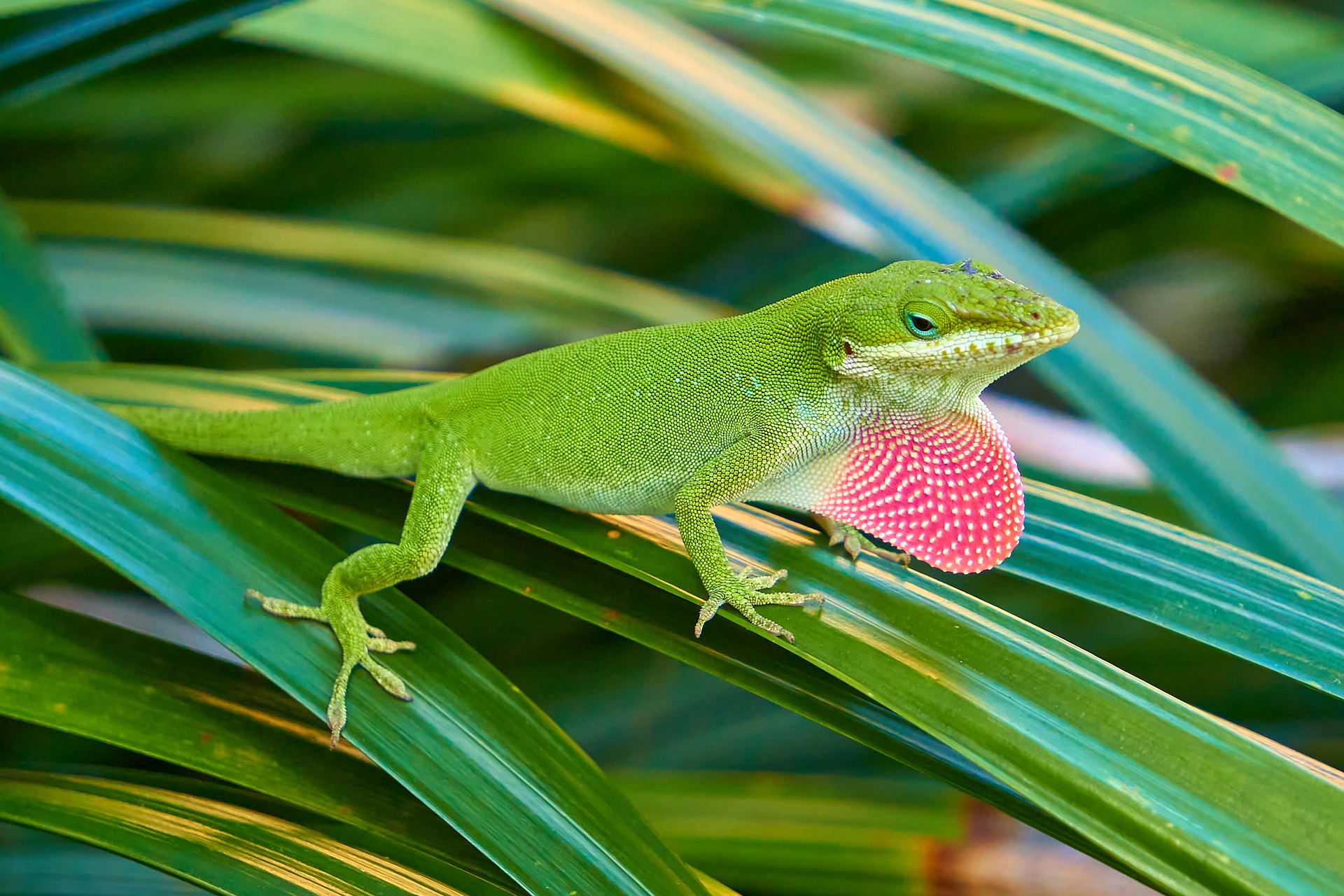
Leapin' Lizards: The Green Anole, Explained
By Cheryl Conley, Lake Creek Preserve Board of Directors
Growing up in the Midwest, I had one as a pet. I referred to it as a chameleon. I’ve also heard this critter called a lizard, a newt, and a gecko. What I’m referring to is the green anole. I have to say I was actually shocked when I first moved here and saw them running wild outside!
Green anoles (Anolis carolinensis) are lizards but they are not geckos, chameleons or newts. The green anole is the only kind of anole that is native to the United States. They can be found in Texas, of course, but also in Louisiana, the Carolinas, Georgia, Florida, Tennessee and Hawaii.
Green anoles have the ability to change color. Sometimes they are green, sometimes brown. It is widely believed that their color depends on their surroundings. In reading some of the studies done on this critter, scientists found that green anoles often did not match the color of their surroundings. One scientist who witnessed a male-male encounter found that the anoles changed color frequently and the “winner” of the encounter was green and the “loser” was brown. It is now believed that stress is one of the most common factors of an anole turning brown. There could be other factors affecting the change as well. It could be the result of the body warming or cooling. Body color in anoles is very complex and there’s no simple answer. If only they could talk.
If you’ve ever observed an anole in the wild, you’ve no doubt seen the red balloon-like display under the chin. It’s a thin flap of skin that is inflated by a group of bones called the hyoid apparatus. Some people call this a throat fan but the real name for it is the dewlap. When inflated, you will also see the anole bob its head. Anoles use the dewlap and bobbing as a way of communicating. Males will display it when defending his territory, when deterring predators and to bait female anoles. When the dewlap is visible, an anole may bite. Females have dewlaps as well but they are much smaller and they rarely use them.
Green anoles are considered insectivores. They eat cockroaches, ants, flies and spiders. Because their eyes move independently from each other, they are able to scan a large area around them to find their next meal. They are great climbers. You may have seen them climb up a smooth, straight wall or fence. Under each toe they have tiny flaps called lamella and microscopic hairs called setae. They both act as adhesives that help them climb.
Anoles shed their skin. In adults, it happens every 4 to 6 weeks on average. It sheds in sections rather than one big piece like snakes. The anole’s color turns into a grayish milky white when it’s about to shed.
Some will eat the shed skin.
FUN AND AMAZING FACT: Their tails detach when threatened or if something grabs them. The detached tail will wiggle which is meant to distract the predator while the anole escapes. A new tail will grow back but it may be shorter or have a little different shape than the original.
You may be able to find stores that sell green anoles as pets. If you want one as a pet, never take one from the wild. Chances are high that they won’t survive. Make sure you research how to care for one. You need to be aware of not only what to feed it but also heating, lighting, humidity levels, substrate, housing and common health problems you may encounter.
 |
|
|
Written by: Cheryl Conley
Cheryl currently sits on the Board of Directors for the Lake Creek Greenway Partnership. She is also currently working with a Montgomery County Commissioner on a new nature center/wildlife center. Previously, she was the president of TWRC Wildife Center and Vice President of Friends of Texas Wildlife. Cheryl is a State of Texas permitted wildlife rehabilitator.
|









